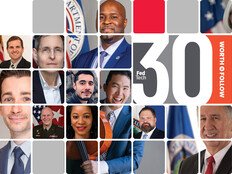Can the Federal Acquisition Workforce Reinvent Procurement?
Rapid technology prototyping. Milestone-based competitions. Incentive prizes.
These sound like innovative practices happening in the private sector, not at risk-averse agencies like the Defense Department. Historically, these terms have not been associated with federal contracting practices, but the White House wants that to change.
NASA, for example, is using milestone-based competitions to buy lunar exploration data from commercially developed, robotic lunar landers. This type of competition allows agencies to strike contractual agreements with a qualified pool of vendors and award task orders for feasible milestones with an assigned deadline, according to a case study released last week by the Office of Science Technology Policy and the Office of Management and Budget.
This is the first version of the Innovative Contracting Case Studies, which OMB calls an “iterative, evolving document” that includes several examples of how agencies are using pioneering approaches to buy goods and services.
The publication comes on the heels of the release of another guidebook, the TechFAR Handbook, which explains how agencies can use their current authorities to buy digital services.
The case study not only offers practical examples of how to use incentive prizes and challenge-based acquisitions to solve tough problems but also explains what the implications of those procurements mean for program managers, legal departments and offerors.
How NASA Drives Competition
NASA’s Innovative Lunar Demonstrations Data program attracted organizations that are usually underrepresented in procurement bids, including small businesses, nonprofits, startups and university consortia, the case study found. The six teams that NASA selected to compete for work were also selected to participate in the Google Lunar XPRIZE, in which teams must safely land a robot on the moon.
For the NASA competition, several of the teams also had private investments tied to their success in completing milestones set by NASA. The agency has already experienced the economic benefits of using milestone-based competitions. The case study noted that NASA spent just $500,000 on the first milestone of the project, as opposed to the typical amount of $3 million to $5 million.
NASA’s approach to buying lunar data is just one example of this new procurement process. If your agency is looking for innovative ways to buy technology or other services, check out the full case study here.
Federal employees can also join a community of practice focused on innovative contracting: the “Buyers Club” email group. There’s also a forum for public discussion on similar issues.









